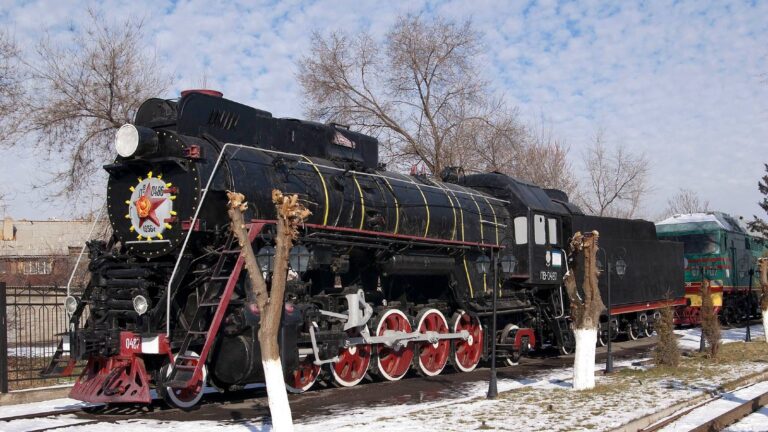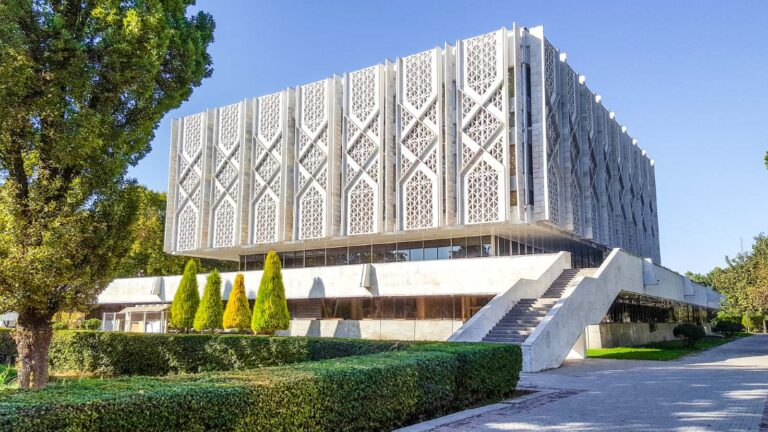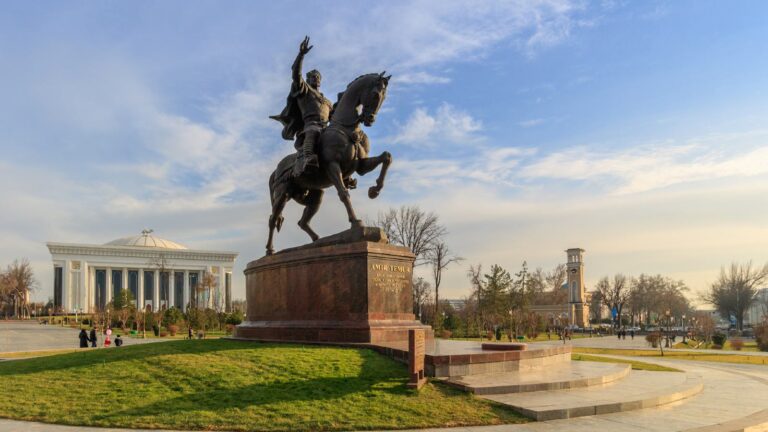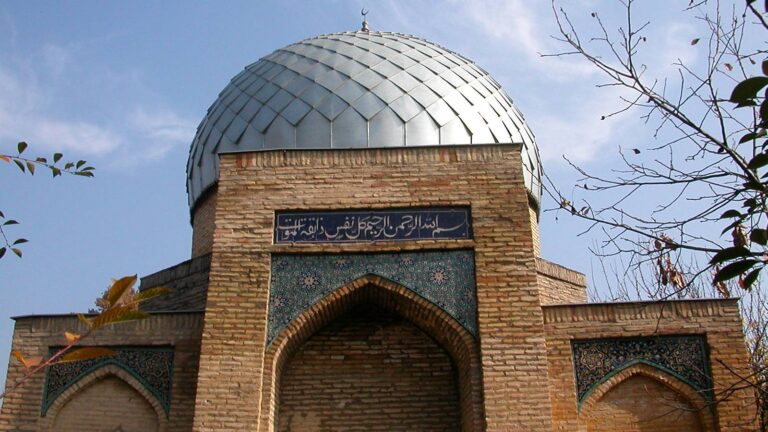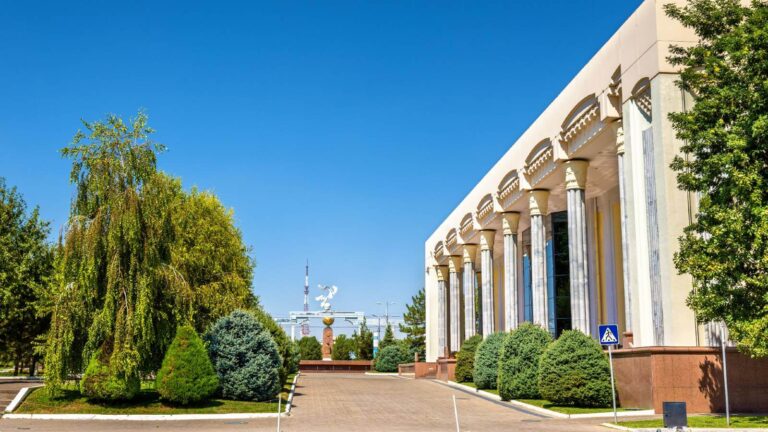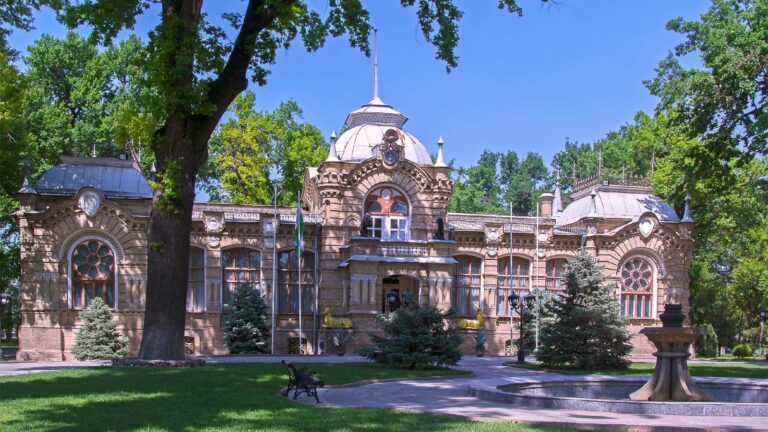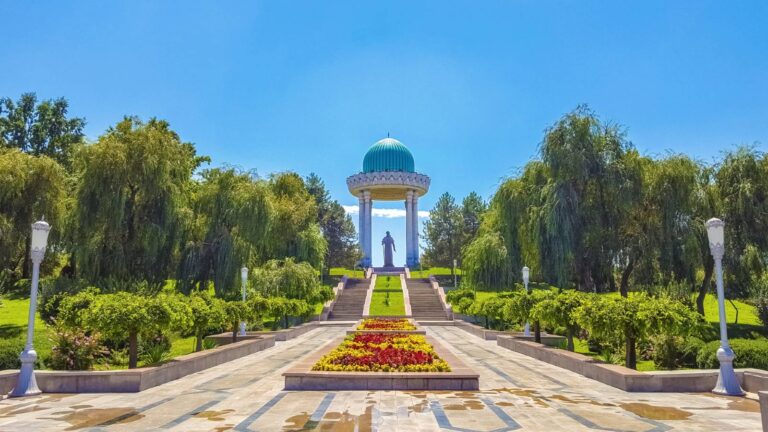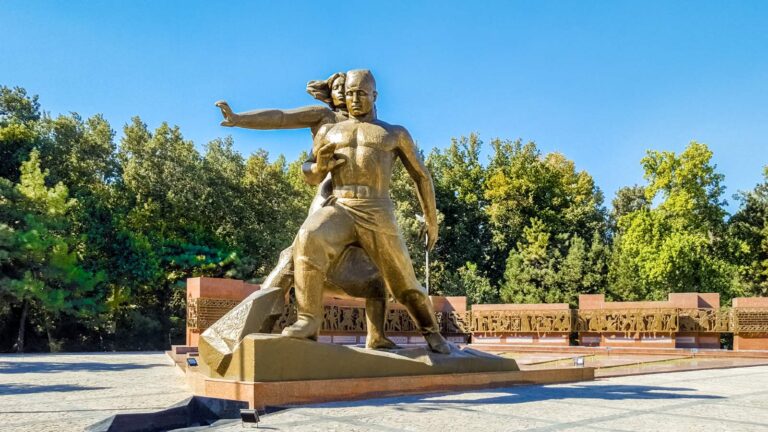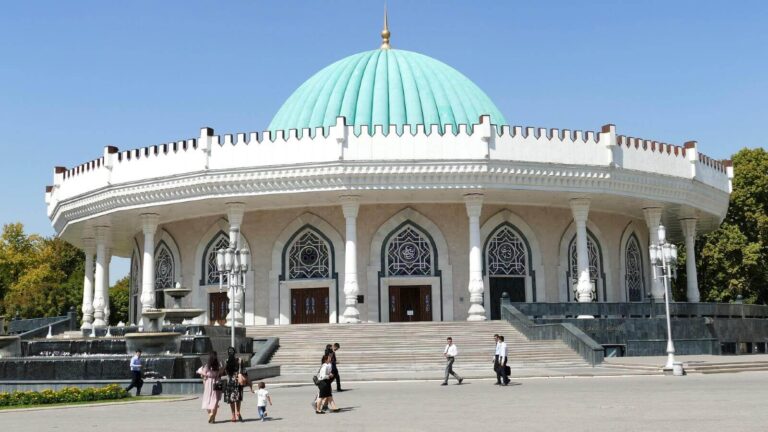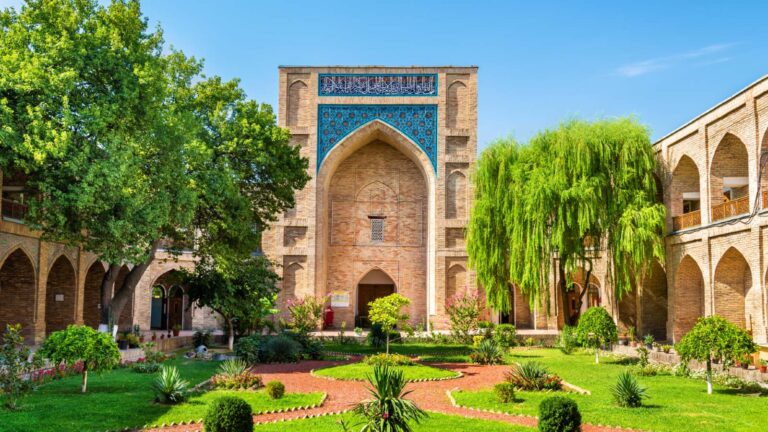Getting There
Near the complex there is a public transport stop Khast Imam Mosque, which can be reached by buses No. 42, 43, and 109.
A little further, at a distance of 5-7 minutes on foot, there is a Karasaraiskaya stop with a bus No. 5 and route taxi No. 34 running regularly.
Chorsu metro station is the nearest to attraction station.
What to Expect
There was a mihrab and a place for the imam inside the mosque cube. Also, indoor the Dzhuma mosque, dome-shaped galleries with cells around a long courtyard were built, takhorathona – a place where Muslims perform ablution before prayer.
The mosque decoration was simple, without rich elements, so that nothing would distract a devout Muslim from prayer. It’s worth noting that the Friday prayer to this day has a special meaning for Muslims, and its attendance is mandatory for every believer. In medieval Tashkent, there was even muhtasibs service, who had the right to subject a Muslim who did not appear at one o’clock in the afternoon for Friday prayer to severe punishment – by beating with sticks. Friday prayer runs as follows. At the hour of prayer, the muezzin calls the Muslims from the tower. Believers perform ablution – takhorat before prayer.
Then they stand side by side in a straight line, facing Mecca. The direction is set by the mihrab – a niche in the qibla wall indicating the direction of Mecca, next to it the imam’s pulpit is situated. Exactly at one o’clock in the afternoon, the imam ascends to the minbar (pulpit). The Imam supervises the recitation of namaz (prayer). Only he alone has the right to be with his back to Mecca during the khutba (sermon). The Imam reads suras from the Koran by heart, and the believers, following the Imam, accompany the prayer with rakats – bows.
History
The foundation of the first Friday mosque in Tashkent (Dzhuma mosque) was laid at the highest point of the ancient Tashkent, Shahristan (center) in 819. To this day, the mosque, repeatedly rebuilt, renamed and restored in different eras, stands in the Old City area, surrounded by Chorsu, Khadra and Eski Juvas squares.
This Dzhuma mosque is the oldest of 157 mosques in modern Tashkent and the third largest mosque in Uzbekistan after the Bibi-Khanum mosque in Samarkand and Poi-Kalyan in Bukhara. From the 15th century to the present, the mosque bears the name of one of the Sufi leaders of the Eastern Middle Ages – Khoja Akhrar Vali, who donated to the city a building constructed on the old Dzhuma mosque foundation in 1451.
The last restoration of the Khoja Akhrar Vali mosque took place in the 90s of the last century. The building was completely redone by modern architects, the cube was demolished, and instead of one dome, now the mosque is crowned with three.
Facilities Available
Attractions nearby
- Tashkent Circus
- Abdullah Qadiri Park
- Turkuaz Chorsu
- Rayhon Milliy Taomlar Restaurant
- Chorsu Bazaar Shopping Center

